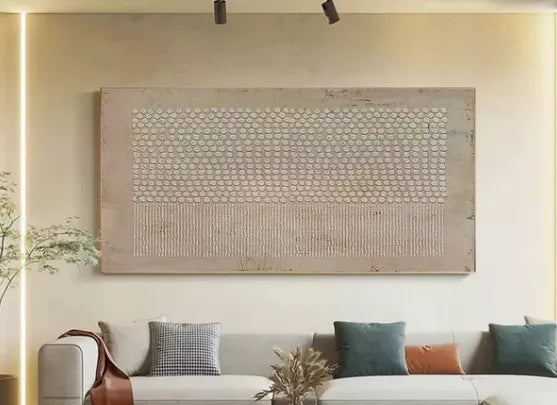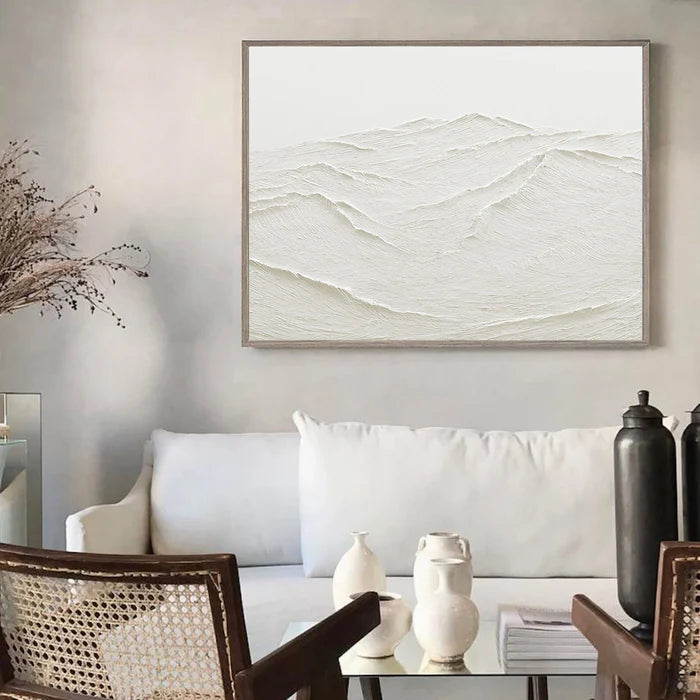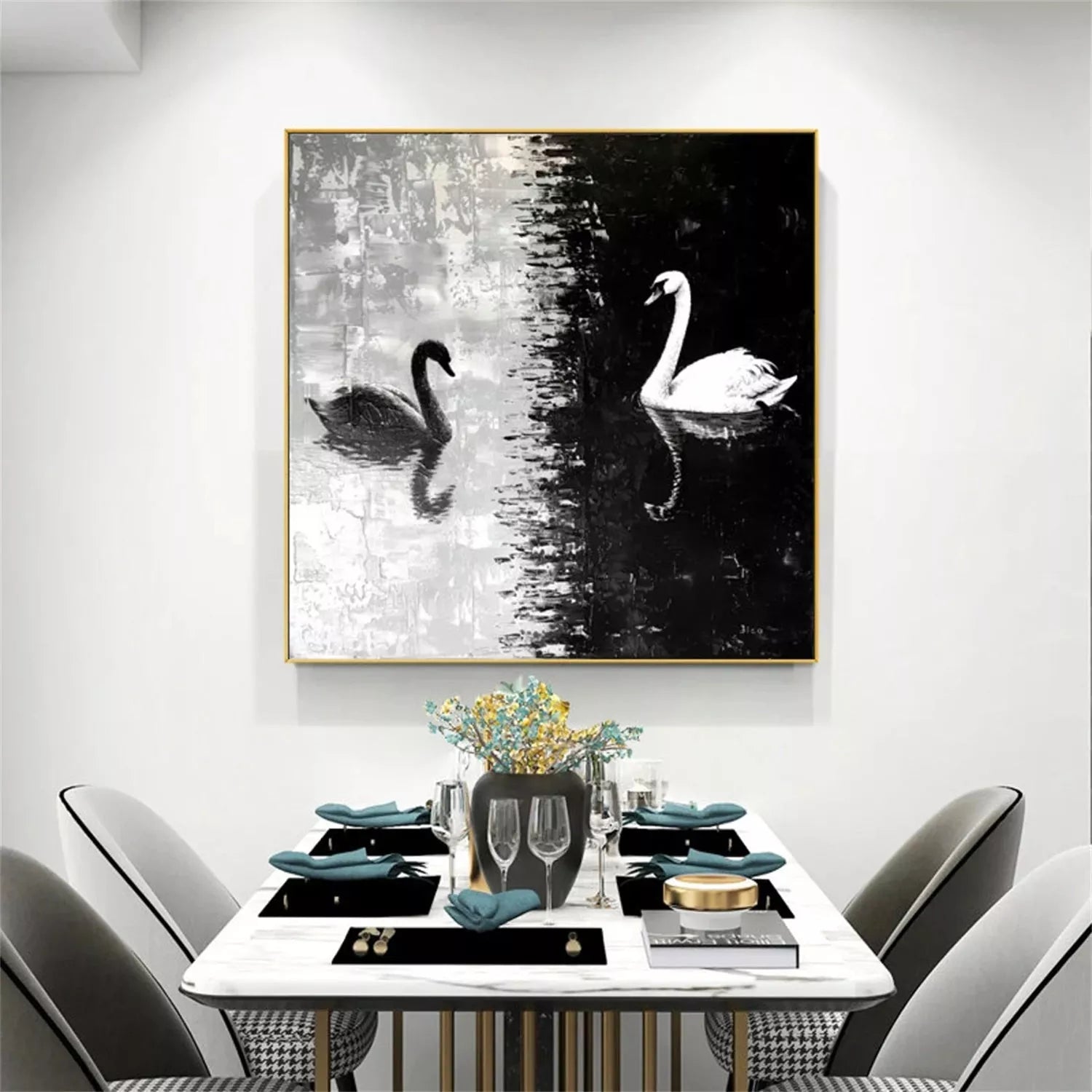
What Is Wabi Sabi Art?
In a world increasingly drawn to polished perfection and digital precision, a quiet rebellion is taking root—one that celebrates the beauty of cracks, the poetry of fading colors, and the elegance of humble materials. This is the world of wabi sabi art, a Japanese aesthetic philosophy that teaches us to see beauty where we least expect it. Many people ask what is wabi sabi art truly about—is it a style, a trend, or something deeper? At its heart, the art of wabi sabi is a way of seeing, a mindful practice that embraces impermanence, imperfection, and the organic flow of nature. Whether expressed through beauty wabi sabi nature art that echoes landscapes and seasons, or through wabi sabi wall art that brings soulful simplicity into living spaces, this philosophy invites us to slow down, look closer, and reconnect with what’s authentically meaningful.
Part 1: The Roots of Wabi Sabi
To truly grasp what is wabi sabi art, we must travel back to 15th-century Japan, where Zen Buddhist monks and tea masters first cultivated this worldview. It emerged not as an artistic style, but as a spiritual response to the extravagance of the time. The term itself unites two ideas: wabi, referring to rustic simplicity and solitude, and sabi, the beauty that comes with age and wear. Unlike Western art traditions that often seek to idealize or immortalize, wabi sabi art finds profundity in transience. Early examples were seen in tea ceremonies using irregular, hand-thrown bowls, and ink paintings conveying more with less. This humble yet profound approach continues to inspire the art of wabi sabi today—reminding us that beauty isn’t manufactured; it’s revealed through time, use, and honest craftsmanship.
Part 2: What is Wabi Sabi Art? Beyond Aesthetics to Awareness
So, what is wabi sabi art in practice? It’s not a set of rules or a checklist of materials—it’s a lens through which we perceive our surroundings. Wabi sabi art encourages us to value authenticity over appearance, and to accept the natural cycles of growth and decay. This is beautifully expressed in beauty wabi sabi nature art, where artists use organic forms, uneven textures, and earthy palettes to reflect the undisturbed grace of the natural world. Think of a canvas that captures the quiet dignity of weathered wood, or a ceramic vase that highlights—rather than hides—the cracks formed during firing. This is the art of wabi sabi: an invitation to appreciate things as they are, not as we think they should be.
Part 3: The Language of Wabi Sabi: Key Themes in Visual Form
The visual language of wabi sabi art is subtle, intuitive, and deeply symbolic. Three themes stand out: imperfection, impermanence, and incompleteness. In beauty wabi sabi nature art, you might find asymmetrical compositions that mimic the irregularity of forests or coastlines. In wabi sabi wall art, textures play a key role—rough linen, layered pigments, or unfinished edges that suggest an ongoing story. This approach is central to understanding what is wabi sabi art—it’s an art that doesn’t strive for finish, but for feeling. Through painting impermanence art of wabi sabi meaning, artists evoke the passage of time, allowing materials to speak with their own voice. A great piece of the art of wabi sabi doesn’t shout; it whispers, leaving space for the viewer to complete the narrative.
Part 4: Wabi Sabi Wall Art: Bringing Intention and Soul into Your Space
Introducing wabi sabi wall art into your home is more than a design choice—it’s an act of intention. Unlike mass-produced prints, each piece of wabi sabi art carries the marks of its making: the artist’s hand, the personality of the material, the unpredictability of natural dyes. Hanging wabi sabi wall art in a room infuses it with calm and authenticity. A textured, neutral-toned piece in a bedroom can foster rest; a soft, abstract work in a workspace can encourage focus. This is where the art of wabi sabi becomes personal—it’s not about matching a color scheme, but about choosing art that resonates emotionally. Whether it’s beauty wabi sabi nature art depicting serene landscapes or abstract compositions that suggest more than they show, these pieces serve as gentle reminders to embrace the present.
Part 5: Painting Impermanence: The Art of Wabi Sabi Meaning
One of the most profound expressions of this philosophy is painting impermanence art of wabi sabi meaning. Here, artists explore the beauty of change, decay, and the ephemeral. Through layered washes, cracked surfaces, or fading pigments, they capture moments that are passing—the way light leaves a room, or how moss grows over stone. This practice lies at the heart of what is wabi sabi art: it’s not a depiction of a fixed subject, but a meditation on transformation. In the art of wabi sabi, a painting is never truly “finished”—it continues to evolve, both in perception and physical presence. This makes wabi sabi wall art especially powerful—it’s a living element in your home, one that deepens with time, just as we do.
Part 6: Living with Wabi Sabi: More Than Decor, a Daily Practice
Living with wabi sabi art means more than owning beautiful objects—it means adopting a perspective. It’s noticing the elegance in a chipped mug, the charm in fading fabric, the uniqueness in something handmade. When you choose wabi sabi wall art, you’re not just decorating a blank wall—you’re creating a space for reflection. Let your selection be guided by feeling, not perfection. Mix beauty wabi sabi nature art with personal mementos. Allow the painting impermanence art of wabi sabi meaning to remind you that life’s fleeting moments are also its most precious. This is the true gift of the art of wabi sabi—it helps us practice acceptance, presence, and gratitude in everyday life.
Conclusion
Understanding what is wabi sabi art opens a door to a richer, more mindful way of living. It’s an aesthetic, yes—but also a gentle teacher. Through wabi sabi wall art, beauty wabi sabi nature art, and the contemplative power of painting impermanence art of wabi sabi meaning, we learn to love the irregular, the aged, and the incomplete. The art of wabi sabi doesn’t ask us to be perfect—it invites us to be present. So, the next time you pause before a piece of wabi sabi art, remember: you’re not just looking at art. You’re witnessing a story—one of natural flow, humble materials, and timeless grace. Let it inspire you to find beauty not in spite of imperfection, but because of it.










